There are as many earbud manufacturers as stars in the sky these days it seems. As numerous as they are, the massive differences in quality are equally as varied. As someone who has suffered hearing damage, I have an appreciation for really clear audio, but I can’t always have an earbud inside my ear for very long. I’ve tried a lot of different bone conduction on-ear audio devices, but the hunt has continued. Audio veterans Cleer have iterated on their own open-ear true wireless earbuds, releasing the ARC II Gaming and ARC 3. Why don’t we take the latter for a spin and see if it can finally give me the audio quality I crave with the comfort I expect. Or at least…if I can pry them away from my wife long enough to use them anyway…
If you’ve not heard of Cleer Audio, they’re somewhat new to the scene, but they’re far from rookies. Established in 2015 and calling San Diego California home, the team is composed of industry veterans and audiophiles of the highest caliber. Their CEO, Hideaki Yamaguchi (Better known as Yama) is a former exec from both Logitech and Sony, with their previous Patrick Huang working for both i.am+ (Will.i.am’s audio technical company), Sony Electronics, and more. Very quickly, these two leaders, along with their tech teams who have also worked in major audio brands, racked up a number of awards for their expertise and tech, including racking up multiple CES Innovation awards nearly every year. They’re quickly earning their place in the market.


Unboxing the Cleer Arc 3 Gaming, it’s immediately obvious that this is not a variant of the hundreds of other on-ear headphones and earbuds. The clamshell-style case opens to reveal the left and right Arc 3 earbuds. They rest in a recessed cradle where small pins provide charge for them. A small mirror on the inside of the case has a very specific and appreciated purpose that isn’t immediately obvious – we’ll get back to that. Closing the case for a moment reveals a touchscreen on top. This touchscreen is your key to upgrading firmware, enabling various features like Dolby Atmos settings, play, pause, skip, control volume, sound presets, manage calls, etc. It can even be used for a VERY welcome feature – the ability to track and locate a misplaced earbud. If you’ve ever had to hunt for one of your misplaced audio devices, you know why this is a must-have.
Like any other earbud on the market, the case is your charger. Thankfully, you won’t need it much – these are truly all-day audio devices. By my measurement I was able to run over 10 hours of music without an issue without disabling a single feature – they said 10, I got 10, and without compromise. Dropping them back into the case for just 10 minutes provided another 1.5 hours of battery life, meaning you can fully charge these in a short lunch break. The case has 40 hours of additional juice, despite a scant 130g combined weight for the case and earbuds, with the latter weighing around 12g each.

While it’s unlikely you’d pick these up for the amazing capabilities of the carrying / charging case, that doesn’t mean Cleer didn’t throw some effort into it. First, it contains a number of health-focused features. You can turn on a limit for “Hearing care” to limit the volume to 85 dB to ensure you don’t damage your ears. It also tracks your steps, and you can have it prompt you to get up and take a walk if you’re sitting for too long. Here you can also enable the head tracking and motion controls, both of which tie together to better approximate simulated motion and sound for movies, games, and TV show audio for their implementation of surround sound. If you’re working out or might be turning your head quickly, you can also turn this off so you don’t lose music if you’re working out and snap your head all of sudden. Additionally, you can use the case (combined with the app) to change the background, allowing a bit of customization to make these your own.
The last major setting on the carrying case is one you might use more frequently – the built-in equalizer. There are six settings that are defined out of the box, with a custom option to create your own setting. Flat, Rock, Jazz, Classical, Pop, and Sport are your choices, with an emphasis on lows, mids, or highs as you’d expect. With just a swipe and a tap you can switch between these at will.


In addition to charging and the other various features, the Cleer ARC 3 case has one other surprise up its sleeve. Remember that mirror inside the case? It turns out that it’s not for vanity, but acts as part of the intense UV-C light earbud sterilization system. UV-C is the most powerful and aggressive UV ray, capable of destroying DNA molecules and germs, disinfecting air, water, and any other surfaces it touches. It’s perfect for ensuring the silicone surface of the devices stay clean between uses. Best of all, they’ll stay that way as the ARC 3 is also IPX7 rated, meaning they are waterproof, dustproof, & sweatproof, with the UV making short work of the latter after a hard workout.
The earhooks on the Cleer ARC 3 are made of a flexible double-layered silicone wrapped around a memory-shape titanium spine. These can swivel around the driver on the horizontal plane, and then bend into whatever shape you need to fit your ears. In essence, once you get these bent into the position you want, they’re built specifically for your ears and yours alone. It might take you a few bends and adjustments to ensure you don’t have them fitting just right without any rub spots, but once you get them dialed in, there isn’t a more comfortable pair of earbuds on the planet.
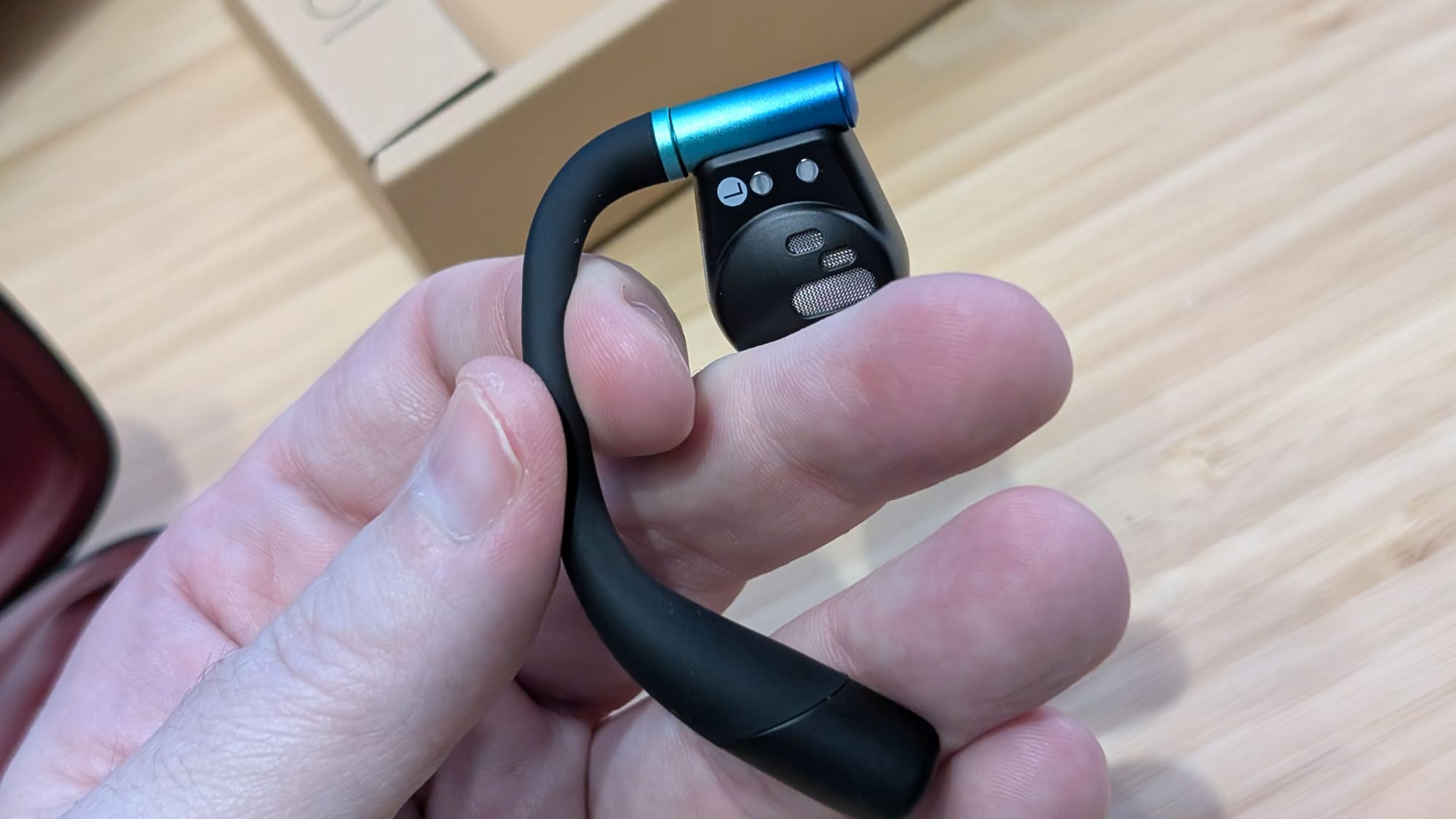
Housed inside the earbuds are some shockingly awesome 16.2 Graphene drivers. While most on-ear or open-ear audio devices are either too quiet, lack bass, or sound tinny, the Cleer ARC 3 Gaming live up to that “Cleer” name. They’re plenty loud, have excellent range at both the highs and mids, and even manage to somehow pull a surprising amount of bass. To help with that, Cleer has packed these little devices FULL of codecs. Supporting SBC, AAC, LDAC, aptX Adaptive, aptX Lossless, and Dolby Atmos thanks to the Qualcomm Snapdragon processor. Obviously the audio you’re listening to has to support the tech you’re wanting to enable (e.g. Dolby), but when they do it’s an audio feast.
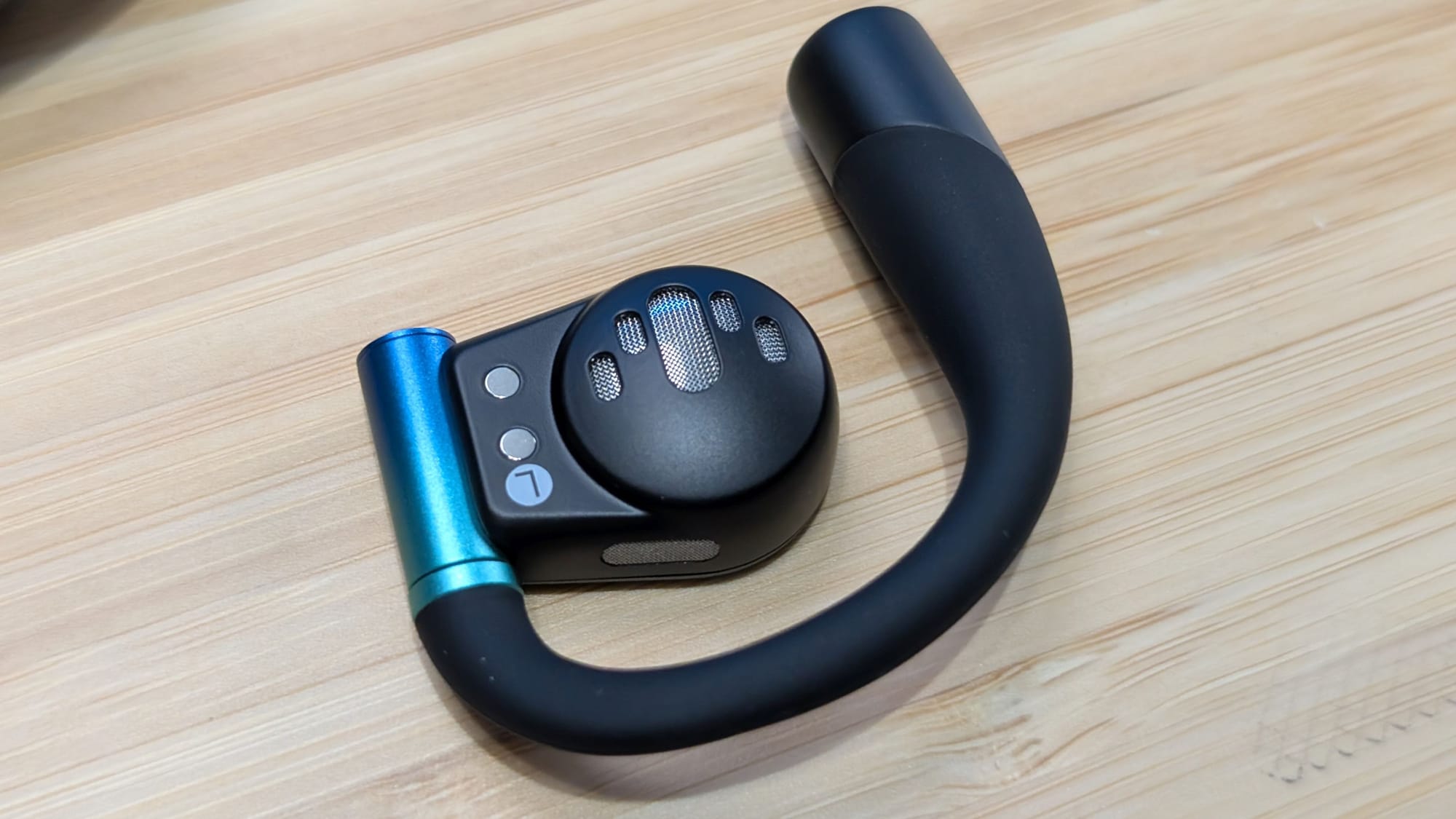
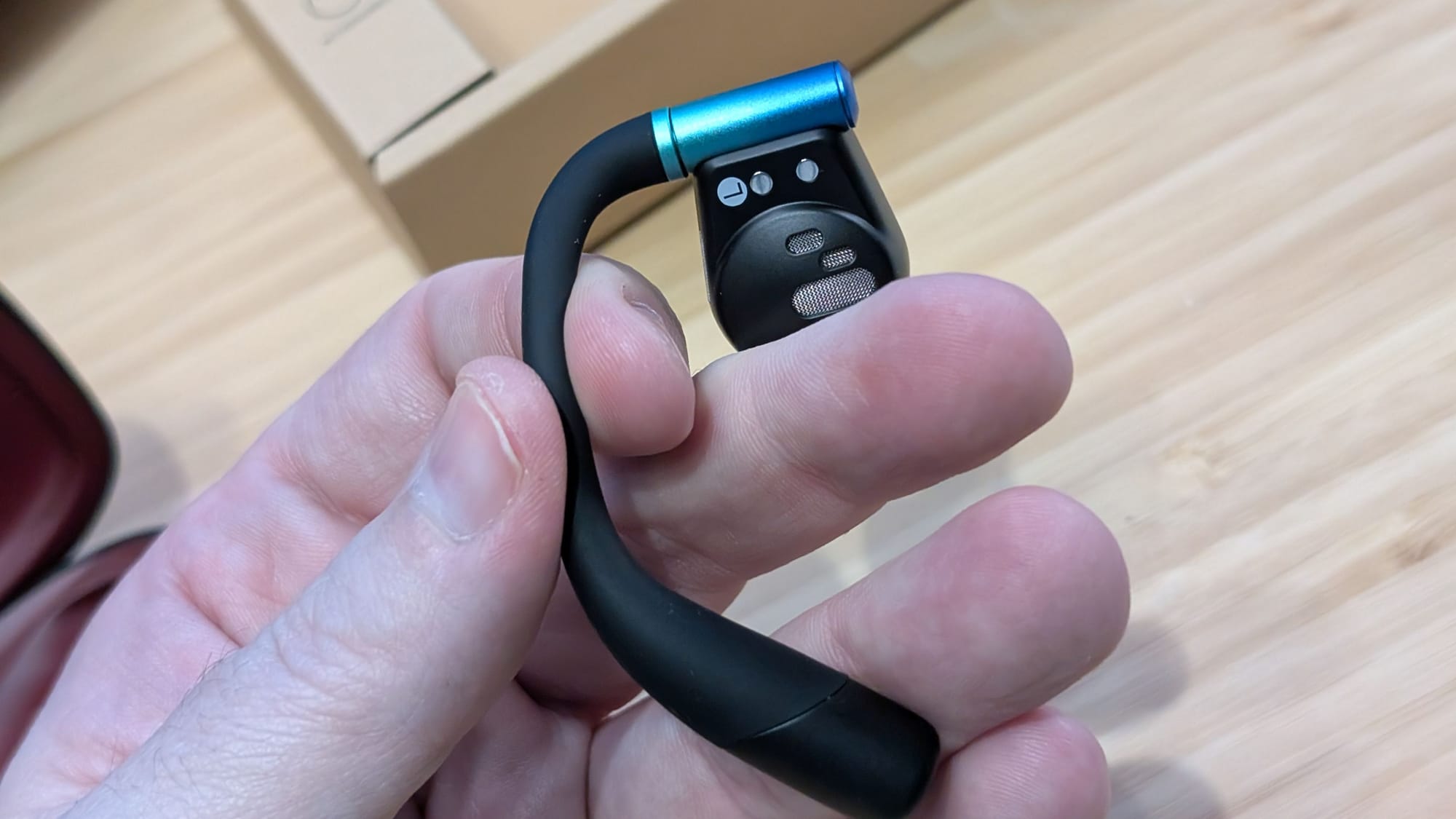

The other half of the audio is the microphone, and Cleer didn’t skimp here either. Leaning on Qualcomm once again, the team has integrated the dual Qualcomm cVc echo cancelling and noise suppression microphones. As a result, you can take a phone call and not sound like you're in a tin can or a wind tunnel. It does so by using the internal processor and a handful of algorithms to apply automatic gain, a touch of equalization, and a number of technologies to run counter-sine noise cancelling, and howling control. Howling control is a fun name for the systems that come together to prevent the sustained squeal or howl feedback sound where the microphone's beamformed output signal can be ingested back into the mic, causing a loud feedback noise. Yes -- even in a set of earbuds in this form factor, they've ensured that can't happen here. It's just one example among many of how much tech resides inside these extraordinarily small earbuds.
Putting these through their paces, I listened to a few chapters of an audio book, some awesome hard thumping music from the upcoming game Den of Wolves, some classic rock, heavy metal, and a few genres in between. I was shocked at just how clean the audio is across the board. Despite the fact that these sit on your ear instead of in them, they are remarkably clear. The lows, mids, and highs all sound clean and crystal clear, with only the bass coming in a little light. That said, I’m comparing (unfairly!) against in-ear earbuds. Why? Because compared against any on-ear earbuds there’s simply no competition. The Cleer ARC 3 Gaming is, by a very large margin, the best on-ear earbuds I’ve ever heard.




I was shocked at just how little sound leakage there is with the Cleer ARC 3 Gaming. Despite them being open-ear, someone would effectively have to put their head on your shoulders to hear what you’re listening to, even at nearly maximum volume. A testament to the driver and earbud case design, the audio is directed into your ear instead of heading out in all directions – important for doing a phone call.
The Cleer ARC 3’s earbuds take a bit of adjustment to find the right spot, but once you do, these are easy as good as almost any in-ear earbud you can find. That said, adjusting the flexible ear pieces takes a bit of practice. Once you find the right spot, you’ll know it immediately, but it may take a few adjustments to find just the angle that gives you the best sound and bass.

The only real drawback on the Cleer ARC 3 Gaming is that, while they have an incredible set of features and functionality, they also have a price to match. Coming in at a retail price of $234.99, they feel just a little heavy on price. Surprisingly, however, there’s good news on that horizon – at the time of writing, I can see them on sale for $199 - precisely where I’d expect for an audio solution of this caliber.
Cleer ARC 3 Gaming Open-Ear True Wireless Earbuds
Excellent
With an incredible feature set, and audio quality to match, the Cleer ARC 3 Gaming delivers a rich and powerful sound that rivals an in-ear set, but without the discomfort of having anything inside your ears. While it may take a moment to find the right spot, once you do, there’s no other open-ear true wireless solutions that can match it – this is the top of the tier.
Pros
- Rich and clean sound
- Vast codec support
- Incredibly lightweight
- 10+ hours of battery life, with ultra-rapid charging
- Almost zero sound leakage
- UV-C light is a welcome surprise
Cons
- Slightly light on bass
This review is based on a retail copy provided by the manufacturer.
